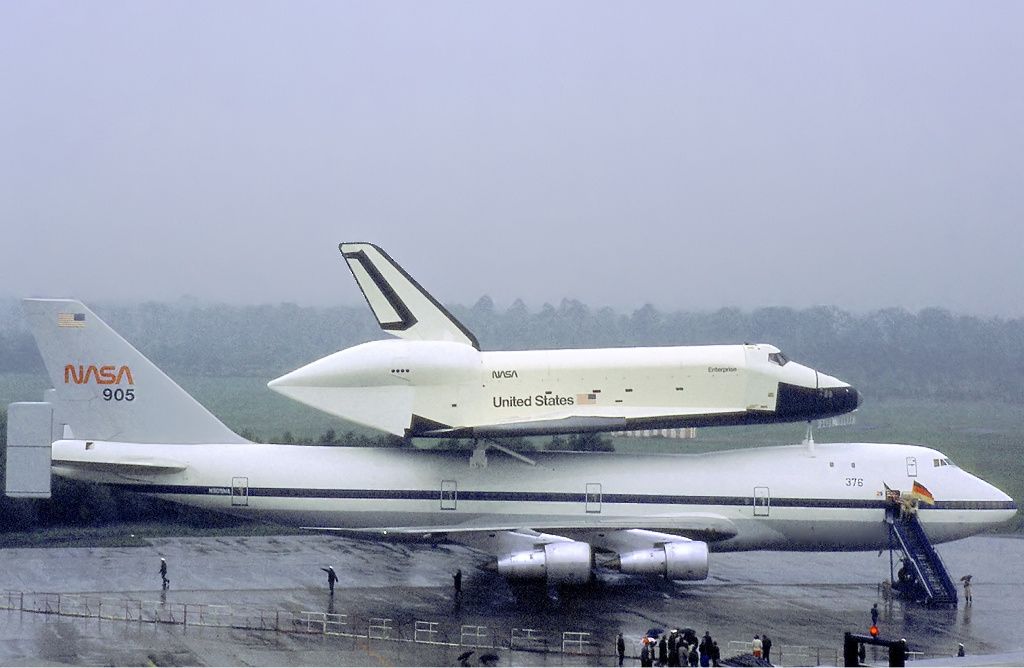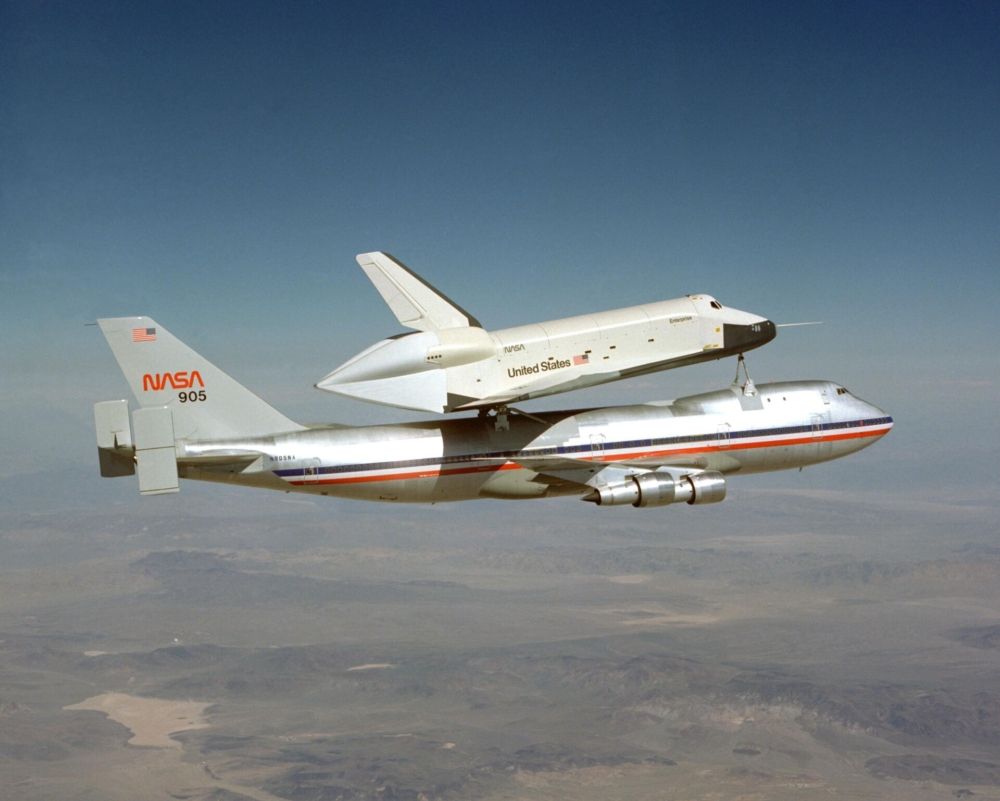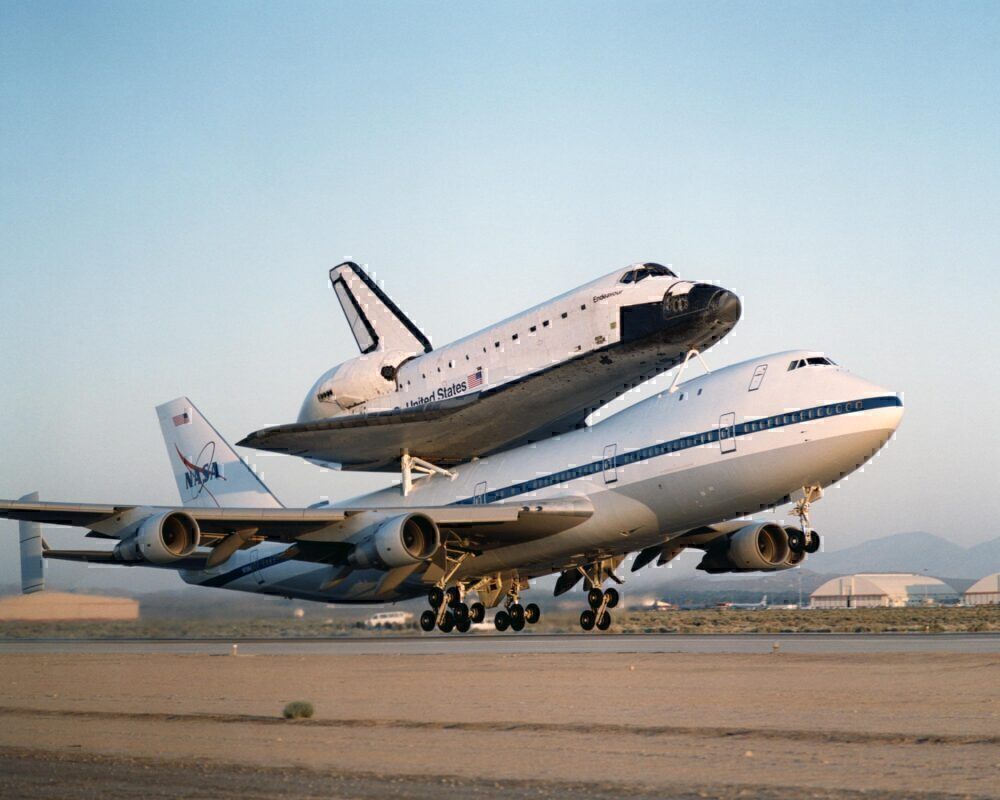In the late 1960s, two significant quadjet aircraft started production, the Lockheed C-5 Galaxy and Boeing's 747. Their commonalities also included the potential for transport use and consideration by NASA for carrying the space shuttle Enterprise. However, due to the C-5's high-wing design, and the fact that the Air Force would own the military transporter, NASA opted to purchase a 747 fully. As it happened, American Airlines was ready to sell a -100 with registration N9668 they initially took delivery for in 1970.
How was the airliner first used and modified?
On July 18, 1974, NASA finalized the deal and acquired the 747, changing its registration to N905NA. Initially, the plane found use in wake vortex studies, but its primary purpose was yet to come. In 1976, the same year Enterprise made its debut at Rockwell International's facility in Palmdale, California, modifications to the 747 began.
Much of the interior was removed, including the entire main cabin and insulation, though some first class seats towards the front remained for crew members. Mounting struts on top of the plane would hold the space shuttle, though the enormous weight of an orbiter on top severely altered the aircraft's center of gravity. To help combat this, NASA added vertical plates at the tail and placed a significant amount of weight in gravel and iron in forward sections of the cargo hold and cabin for balance.
Love aviation history? Discover more of our stories here.
Engines received a significant upgrade as well. Pratt & Whitney JT95-3As high bypass ratio turbofans were replaced by JT9D-7J gas turbine engines, providing a few thousand more pounds of thrust per engine. With modifications complete and the Enterprise orbiter ready to be attached, test flights could begin.
Test flights begin
On February 18, 1977, NASA set the space shuttle with no crew atop their Boeing 747 at the Edwards Air Force base in Southern California. Commander Fitzhugh Fulton, pilot Thomas McMurty, and flight engineers Louis Guidry and Victor Horton readied the jumbo jet and brought Enterprise into the air in its first captive flight. During its flight which lasted about two hours, the 747/space shuttle orbiter combination reached 287 mph (462 kph) and a peak altitude of 16,000 feet.
Over the next year, Enterprise was taken up in a series of captive flights to study and understand the flight aerodynamics with the aircraft together and a few free flights with the orbiter detaching to test gliding and landing. Eventually, the 747 would settle on a 15,000-foot ceiling, 290 mph (466 kph) max speed, and 1,150 nautical mile range when the shuttle was attached.
A second 747 and the eventual retirement of both
As many Simple Flying readers know, this wasn't the only 747 operated by NASA. Initially purchased by Japan Airlines as JA8117, then transferred to Boeing in April 1988 as N747BL, a 747SR took on the registration of N911NA under NASA's ownership. The second jumbo jet was modified in much the same way as the first and saw its initial use transferring the space shuttle Endeavour from Palmdale, California, to Kennedy Space Center. Today, you can find the NASA 905 on display at Independence Park in Houston, Texas, while the 911 sits at Joe Davies Heritage Airpark in Palmdale, CA.
Sources: NASA, NASA, This Day in Aviation



